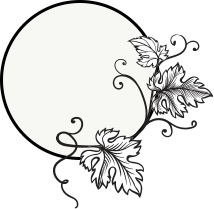
Glosario
Spanish Wine Academy

Alcoholic fermentation
The biological process in which yeasts transform sugar into alcohol.
Autolysis
The breaking down of yeast cells after alcoholic fermentation, which adds aromas and flavours of bread and brioche.

Batonnage
Winemaking technique that consists of stirring the lees in the barrel with a stick to integrate the aromas, flavours and textures that the lees give to the wine.
Biological ageing
Ageing that takes place in the presence of flor (a veil f various types of yeast) that transform alcohol into CO2 and acetaldehyde.
Botrytis cinerea
A fungus that infects vines and cause grey rot and noble rot.
Bush training
A training system that is characterised by the goblet-like shape of the vine. There is no form of supports in this system and the vine cannot be machine-harvested.

Cap
The layer of solids that forms during fermentation.
Cork taint
A wine defect caused by the TCA chemical, which contaminates wine and adds armas of cardboard, mould and wet dog. People also say the wine is “corked”.

Decanting
A technique to separate a wine from its sediment or to aerate it and open its aromas.
Delestage
Also know as “rack and return”, a process that takes place during alcoholic fermentation that consists of emptying the vessel and pouring the wine over the cap for greater extraction.
Destem
To separate the grapes from the skins and stems.

Esca
Vine disease caused by fungi that infect the wood and which is very difficult to control or treat.

Flor
A veil of various yeasts that is used for biological ageing.
Fortified wines
Wines characterised by the addition of alcohol. The alcohol can be added during fermentation or afterwards. Also know as liqueur wines.

Grey rot
Botrytis cinerea, grape rot.

Harvest
Picking the grapes to produce wine.

Lees
Dead yeast left after fermentation.

Malolactic fermentation
Biological process carried out by bacteria (Oenococcus oeni), which transform malic acid (green apple) into lactic acid (milk.).
Mildew
A fungal disease that affects vines.
Must
Grape juice that contains the pulp, skins and stems prior to fermentation.

New World
Countries outside Europe that don’t have a long history in wine production (Australia, Chile, China, etc.).
Noble rot
An infection by Botrytis cinerea, a fungus that, in the right conditions, can be used to make sweet wines. For this process, the vine needs ver damp conditions in the morning and sunny afternoons. The fungus concentrates the sugar in the grapes.

Oidium
A fungal disease that affects vines.
Old World
Europe, countries with a long tradition of wine production.
Oxidative ageing
Ageing in the presence of oxygen. In this case, oxygen is in contact with the wine, giving characteristics of dried fruit and resinous notes.

Phylloxera
An insect that is fatal to grapevines that arrived from America to Europe in the 19th Century. The only solution if to grow European vines on American rootstock.
Pomace
The grape skins, seeds and other solids left after pressing.
Pumping-over
A technique that consists of pumping the wine from the bottom of the tank over the wine at the top during fermentation, to extract more tannins, colour and concentration.
Punching down
The process during fermentation that consists of using a punch down tool to break the cap of skins. It is also know as “pigeage” in French or “bazuqueo” in Spanish.

Racking
The process of moving wine from one barrel (or another container) to another. It is carried out to clean the containers, give the wine some contact with oxygen or control the aromas and ageing with different barrels or vessels.

Solera
System of ageing that consists of different levels (criaderas) formed of butts (600l used oak barrels.) In this process, winemakers move the wine between the different levels over time, creating a mixture between the younger and older wines. The younges wine is found at the top and the oldest in the lower part (solera.).
Stems
The structure that connects the grapes in the bunch. They can be used in fermentation to give fresher flavours to the wine.

Tannins
Natural substances that are found in grape pips, stems and skins. They add astringency, bitterness and structure to wine.
Terroir
A French term that encompasses a combination of factors (climate, location, soil, grape variety and human influence) that mean that an area, vineyard or wine has certain characteristics.

Veraison
The change in colour, aromas and acidity in the grape that usually occurs in Juli or August in the northern hemisphere. It means that the grape is ripening well.
Vinification
Winemaking, the process of making wine.
Viticulture
Science of the cultivation of grapes for the production of wine.
Vitis vinifera
The species of vine that produces grapes used traditionally for winemaking.

Wire training
A vine training system that consists of distributing grapes on wires that are supported by posts. There are different types within this system and the grapes can be harvested by machine.
